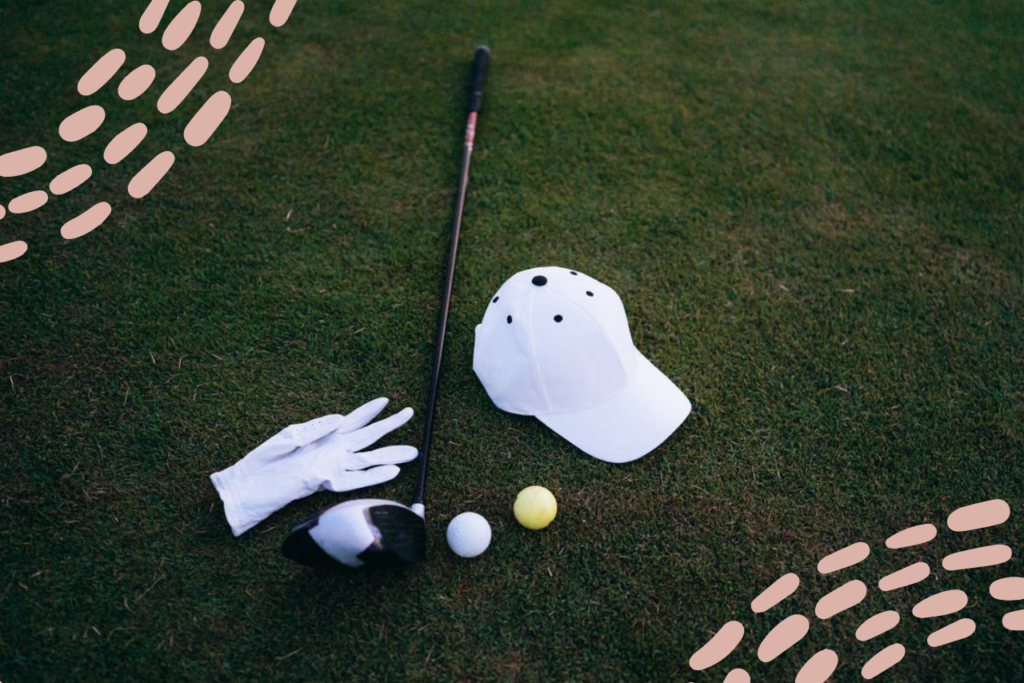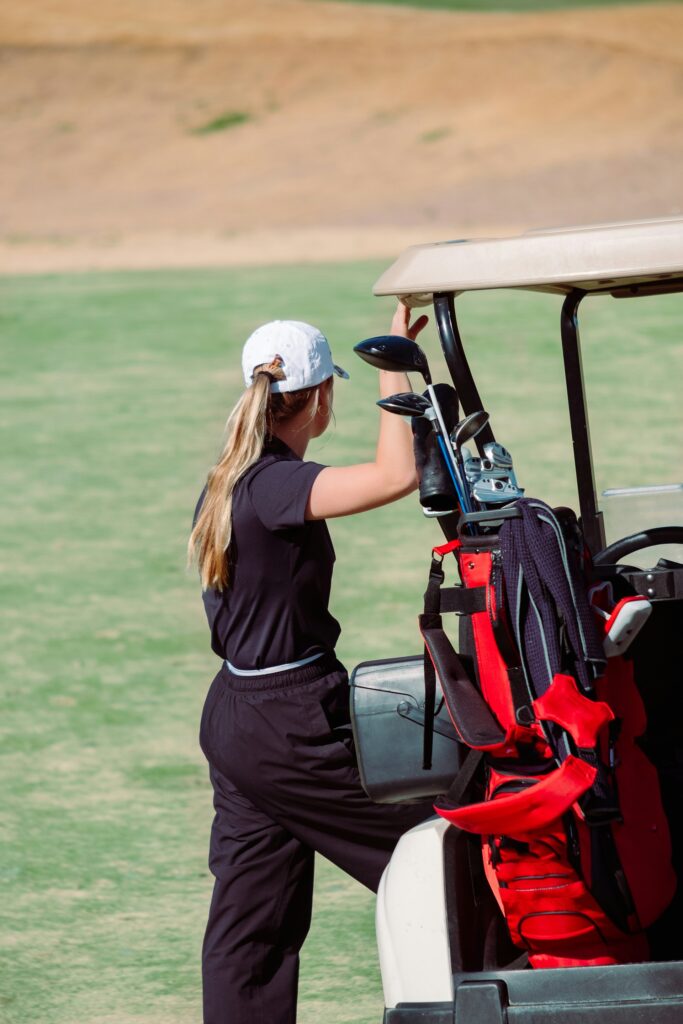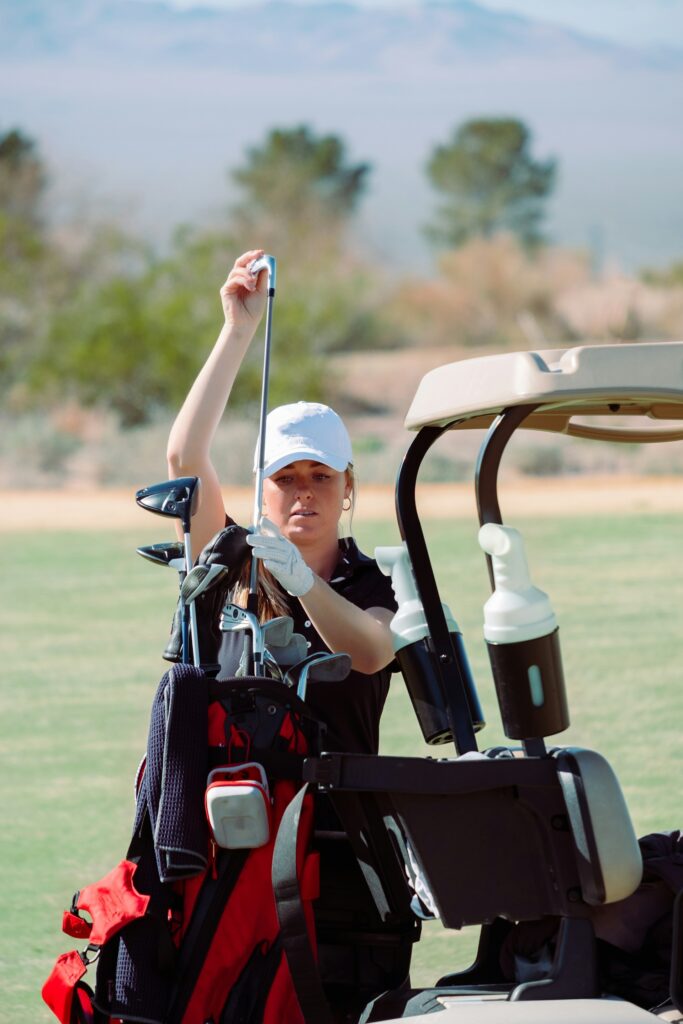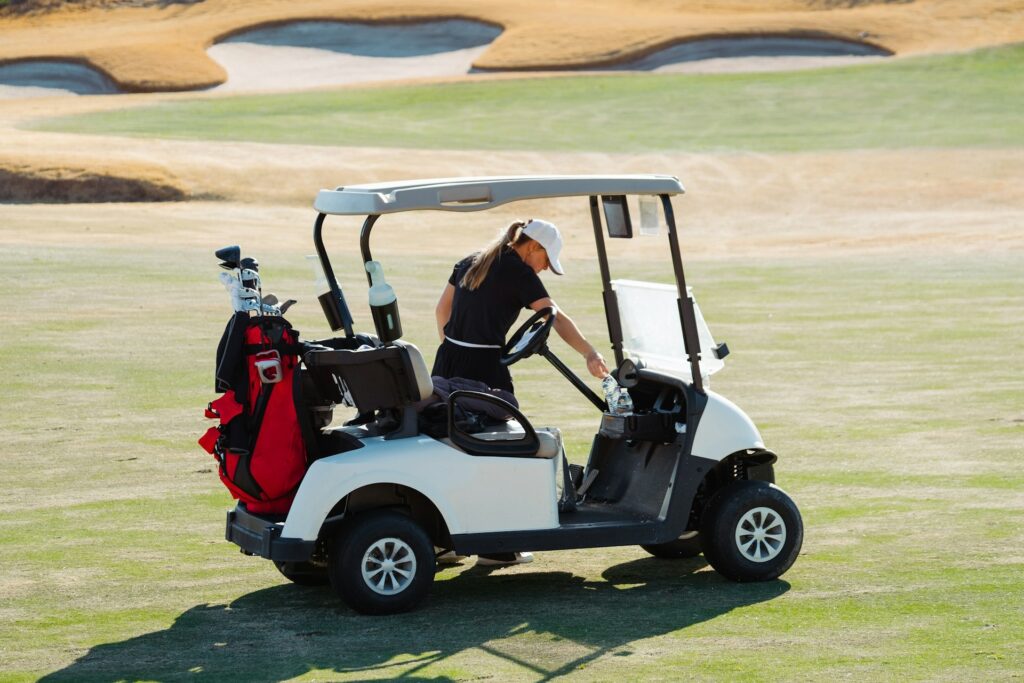There’s no game quite like golf. Indeed, it could be argued that a round of the good stuff represents one of the most relaxing and simultaneously challenging pastimes there is. The game can take all day if you let it (or more, if you’re searching for your balls in the rough!) and can quickly take over your non-game time, too, if you’re seriously focused on improving your game.
Given the pleasure that comes from playing golf and the satisfaction found in working on your game, especially if you’re golfing with trusted friends, many golfers find great joy in taking a trip devoted entirely to the pursuit.
You might have a weekend or even a full week away from technology and work with just you, your buddies, and a favourite golf course…. Heaven. The time can be restful, rejuvenating and can dramatically improve your swing. Yet a golf trip can also be a real headache if you’re not properly packed and prepared. Whilst we can’t show you how to golf or help you improve your game, we can advise you on the latter; here are 7 tips to help you pack better for your golfing getaway.
Don’t Pack Too Many Shoes
Shoes are big and bulky and tend to quickly use up spare luggage space. As such, you need to consider your footwear carefully when it comes to a golfing trip. You’ll, of course, need golf shoes and it’s a good idea to bring more than one pair, just in case the first gets sodden or ruined by rain and mud.
It’s likely that, unless you’re going somewhere hot and bringing flip flops, you’ll only have room for one more pair of shoes, as the majority of your luggage allowance will be taken up with golf equipment. Investing in a pair of smart casual shoes (a bit of a catch-all phrase, we realise) that you can wear during the day and in the evening in more formal settings is probably the best move, here.
Ideal Tip: Don’t forget to pack some antimicrobial socks to ward off funky smelling feet.

Check Weight And Size Restrictions
Perhaps the most important decision of all, this; you need to decide whether you’re going to hire some golf clubs, or take your own. If it’s the latter, then deciding what clubs to bring depends on your skill set – the must-have clubs are the ones you hit best with, whether that be those trusty Ping Irons or some specialised clubs.
Most airlines consider golf equipment as a standard checked baggage item (usually with a 23kg – or 50lb – allowance), meaning you may need to purchase additional baggage allowance if you want to bring another checked suitcase with you.
If your clubs exceed the checked baggage allowance weight, an overweight baggage fee will apply. When it comes to golf clubs, some airlines also charge an oversized item handling fee, too. The conditions and costs will vary between airlines, so check the size and weight restrictions of any carrier you’re considering before you finalise the details of your trip.
Ideal tip: Depending on the maximum weight restriction, pack any extra clothes in your golf bag – not only does it provide extra cushioning for your clubs, but it also gives you more room to pack other items. Most golf bags have extra pockets so take advantage of this.

Two Outfits A Day
Most golf clubs have a dress code – chinos and a collared shirt at a minimum – which means you’re probably going to need at least two outfits per day (one for golfing and one for the evening after you’ve showered). You also want to look up what the specifics are in terms of attire at the particular course or club you’ll be golfing at. Finally, you might be in need of formal dinner attire if there are evening plans with a dress code, too. Most golfing trips involve the odd trip to a fancy restaurant or suave bar, after all…
If you’re going to be sightseeing or wandering about, be sure to pack light layers to help you deal with whatever weather you encounter. There’s a common Danish catchphrase that says ‘’there’s no such thing as bad weather, only bad outfits’’, and we couldn’t agree more. Layers with a lightweight rain mac thrown in for good measure will help you quickly adjust to any surprises in the temperature or conditions you might encounter.
When it comes to packing clothing, you probably want to minimise any wrinkles and creases accrued, given the more formal standards of many golf courses, clubs, and their dress codes. This will involve packing loosely (wrinkled clothes are often the result of an over-packed suitcase).



You also want to fold items differently; fold once length-wise and then roll up what’s remaining into a cylinder. Not only will this help you save space in your suitcase, but it will also help reduce creasing.
Of course, you don’t want to be rolling dress shirts. When folding them, try to stick with natural seams. Finally, using plastic dry-cleaning bags to help further reduce wrinkling. Plastic will help reduce friction, which can cause wrinkling. As a bonus, these bags can be reused to hold your soiled clothing (particularly sweaty clothing) without letting the scent seep into your suitcase or other possessions.
Consider A Golf Trolley Bag
If you’re planning to walk the course rather than hiring a buggy, investing in a proper golf trolley bag can make all the difference to your golfing experience. These bags are specifically designed to sit securely on a pull trolley whilst providing easy access to your clubs and accessories. Look for one with a good base that won’t tip over and plenty of pockets for tees, balls, and refreshments. Many modern trolley bags also feature insulated pockets to keep your drinks cool during those long summer rounds.
The beauty of golf trolley bags is that they’re designed to stay upright when stationary, making it much easier to organise your gear between shots. Plus, you’ll save your back from the strain of carrying a heavy bag for 18 holes, leaving you fresh for that crucial putt on the final green.

Pack A Weather Contingency Kit
British weather is famously unpredictable, and golf courses are particularly exposed to the elements. Pack a compact weather kit that includes a quality waterproof jacket (preferably one designed for golf that won’t restrict your swing), waterproof trousers, and a sturdy golf umbrella. Don’t forget a spare glove or two – wet gloves can ruin your grip and subsequently your entire round.
Consider packing a lightweight towel specifically for drying your clubs and hands, as most courses provide towels but they’re often sodden by the time you reach them. A small bottle of hand warmers can be a godsend during those crisp autumn mornings, and sun cream is essential even on cloudy days – the reflection off water hazards and sand bunkers can catch you unaware. Remember, there’s nothing worse than being caught unprepared when the heavens open on the back nine.
Space Saving Smarts
One space-saving trick is to pack only the medication, supplements and precautionary first aid items you’ll need, rather than the entire medication bottle. This might involve taking out the pills required for the length of the trip and putting them in a pill container or labelled plastic bags.
If you’re someone who gets allergies (a common occurrence on the course), you might want to bring some allergy medication as well – you won’t be able to know what flora and fauna is present on the course until you get there. Just be forewarned that allergy medication can cause cloudiness in the mind and drowsiness in the body. This can affect your golf game and even your ability to drive a golf cart.



Don’t Pack Last Minute
This is a tip that applies to packing for any holiday, not just a golf trip; packing last-minute is a recipe for disaster. It’s easy in a frazzled state to forget something vital, and begin your supposedly relaxing trip stressed and anxious. To avoid this, pack a few days beforehand. This will give you time to realise, register and realign, if you’ve forgotten something before you’re actually away on the trip.
And with that, we wish you bon voyage. Or rather, fore!





